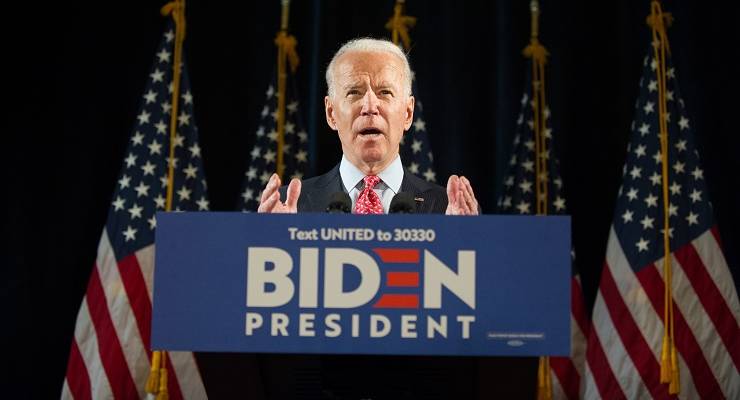
A little more than seven days from now, we could know the fate of the Trump presidency.
Former vice-president Joe Biden maintains a healthy lead over Donald Trump — between eight and 10 points depending on which polling average is used.
But the shock of 2016, when most polls and pundits wrote off a Trump upset, means many are still wary of a late twist. The good news for the Biden camp is this: by this stage in the race four years ago, Hillary Clinton’s national polling average was starting to fall, thanks in part to then FBI director James Comey’s decision to investigate her emails.
Biden, more popular than Clinton ever was, hasn’t seen his lead drop. Instead, the pandemic, a broken economy, the sheer chaos of the Trump administration make him look a safe pair of hands.
But like in 2016, Trump still has a narrow path to victory — lose the popular vote, but patch together an electoral college majority by hanging onto a handful of precarious swing states. He must win at least two of Pennsylvania, Wisconsin and Michigan, the rust belt states where he scraped past Clinton. And he cannot afford to lose Florida.
So, how likely is Trump to pull it off?
Florida
America’s largest swing state, ultimate political bellwether and all round hot mess is crucial to Trump’s chances.
Biden is currently up by about 2%, but then again, this is Florida. Democrats have been encouraged by high early voting and mail-in ballot numbers, as well as strong youth turnout, although the GOP is starting to chip away.
What makes Florida so unpredictable is its sheer diversity.
The state’s large Latino population will be a challenge for both sides. Conventional wisdom is that Trump’s anti-immigrant rhetoric should make him toxic to this growing demographic. Not so simple in Florida, where many particularly older people in the large Cuban and Venezuelan diaspora communities have fallen behind the president because of his toughness on socialism.
In 2000, Florida decided the election, via the Supreme Court. It could give us more drama next week.
Pennsylvania
Trump won the rust belt state by less than 1% in 2016.
This time round, he faces Biden, son of the old coal mining town of Scranton, PA, who leads by about five points.
But there are enough undecided voters around to give the president who held three rallies in the state yesterday (US time), a late boost.
Trump’s last minute messaging in Pennsylvania was all about fracking, an industry he claims Biden will destroy, although it’s unclear whether that message remains as potent as it was in 2016.
Wisconsin
Things will be even tougher for Trump in Wisconsin, a state the president also won by less than 1%, and where Biden has a seven-point lead.
The former vice-president will be buoyed by a record number of early voters in the state — four years ago, low turnout for urban Democrats killed Clinton in the state.
Now, Trump’s pitch is a law and order dogwhistle to the white suburbs, especially after mass protests in Kenosha over the police shooting of an unarmed black man turned violent. The problem for Trump is the narrative of far-left chaos never stuck — since August’s unrest in Kenosha, Biden’s lead has stayed solid.
Michigan
Trump tore down the blue wall with a 0.23% victory here in 2016, his narrowest of the election.
But again, he’s well off pace, with Biden ahead by about seven or eight points. The Democrats have wind in their sails. They won big here at the 2018 midterms, and the campaign has been far more proactive in trying to boost turnout compared to four years ago (early voting is nearly double 2016 numbers).
They’ve also gone on an advertising blitz in a state the Clinton campaign more or less forgot. This one will be tough for Trump.








Put simply, the fate of amerika, and thus the world, will be decided by the dumbest, most misinformed when not utterly ignorant, voters in the known Multiverse.